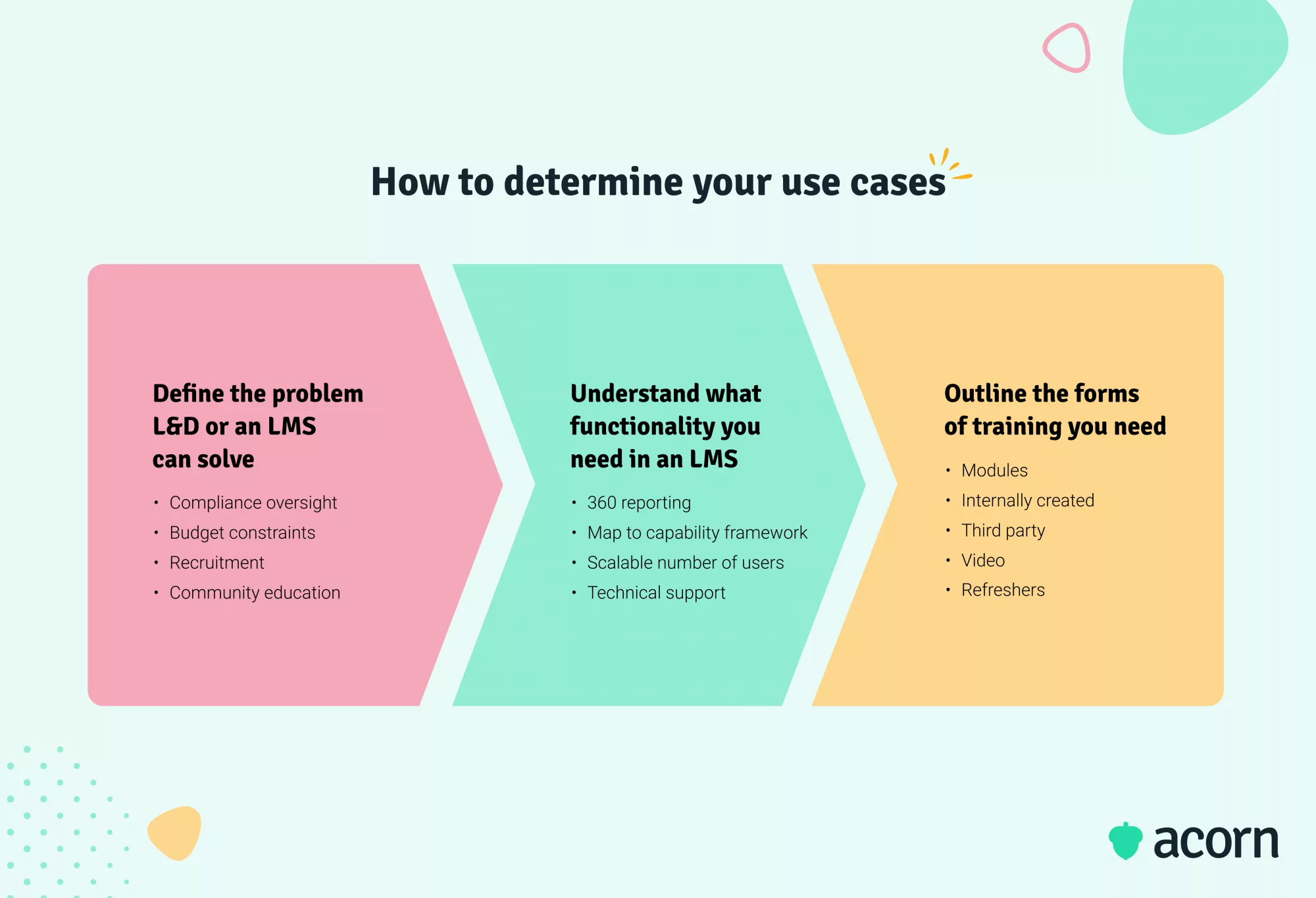How Local Government Organisations Use the LMS

It’s different from fed and state, but it’s equally focused on security, reporting and workforce capability.
How Local Government Organisations Use Learning Management Systems to Boost Efficiency
Between national and state agendas, community expectations and regional talent scarcity, councils face many workforce challenges. A local government learning management system (LMS) can make all the difference.
What makes an LMS the right fit for a council comes down to intended use. Once you know exactly what problems you need an eLearning solution to solve, you’ll be able to reap benefits that positively impact your council’s directives.
What LMS does government use?
The reason we feel like a credible voice on this topic is because over 75% of the Australian Federal Government use Acorn PLMS. Acorn is a cloud-based learning management system that helps HR, L&D and workforce planning leaders use data to prove their strategic impact, with a specific focus on aligning employee development, capabilities and business objectives. The platform can be used for everything from compliance and external training to creating capability frameworks and reporting on learning.
What is a local government LMS?
We all know a local government LMS is used to provide both internal employee training and external public training. If we want to get really specific, it acts as a central location for hosting, distributing and reporting on the learning and development of a council workforce.
Why an LMS is important for councils
Those outside the workforce may be surprised to learn the terrain local government covers. Since councils manage matters close to home like building regulations and development, roads, health inspections, community support services and waste management, their learning and development (L&D) needs differ from their state and federal counterparts.
The talent pool for local government also isn’t as wide as state or federal. Employees are usually locals and live regionally, which can exacerbate skills or capability shortages in smaller communities. Some councils may not share services either, making it important for the existing workforce to possess a wide range of managerial, community engagement and practical skills in order to meet unique community expectations.

This makes professional development, and an accessible location in which to do it, crucial. With all this mind, these are the main use cases we see for council LMSs and online training:
- Compliance training. Compliance is usually a time-sensitive endeavour. An LMS provides easier, automated management of various regulations. That’s high level, like aged care, construction and education—but also behaviours expected of government staff at the workforce level.
- Leadership and succession training. A shortage of incoming talent means leadership development is necessary for creating critical human-centric capabilities.
- Multi-tenancy for internal and external training. Councils often have to provide public education on schemes and initiatives as much as they do employee upskilling, so secure, separate tenancies within an LMS are a key functionality.
- Reporting. Full-fledged learning analytics are the key to effective learning. As it’s an automated and integrated feature of the LMS, it’s one of the benefits online training has over face-to-face.
Want to see Acorn PLMS in action? in action?
Hit the book a free demo button here, take seconds to fill in your details, and find out how Acorn can help you succeed.
The benefits of a local government learning management system
While local councils aren’t striving for private sector goals like growth and increased revenue, they do experience similar workforce challenges. This makes a strategic workforce solution—like an LMS—the turnkey for enabling community services through employee training.
Scales for organisation
The tyranny of distance and potential isolation of professionals was first noted in a 2012 report into eLearning in Local Government. It’s truer than ever in the years since, considering global shifts like the Covid pandemic and its ripple effects.
Changing regulations, disabilities and rural locales are best accommodated by an eLearning solution. Across these workforce parameters, an LMS has the added ability of simultaneously deploying training for multiple capabilities, roles, compliance and industry needs. This gives equal opportunity to those who may not otherwise be able to obtain qualifications.
Over time, it also means that more succession or recruitment decisions can be made against capabilities, better aligning organisational outcomes and L&D. And when it comes to leadership, training can start at any level to ensure a talent pipeline is always being nurtured—making performance management much easier.
Automated compliance
We needn’t go on about the security risks involved in government work. But manually managing compliance needs for dozens, if not hundreds, of roles is an impossible task for HR professionals. It’s also a continual process of risk management rather than one that looks at specific points in time, made ever harder by increasing compliance scopes as a workforce grows.
While it’s important for meeting regulations internally, compliance helps establish trust in and set standards for local communities. Automated instances of compliance training often utilise artificial intelligence—encompassing live compliance status updates, automatic notification of outdated completions, amongst other corrective measures. This is made even more helpful when you consider compliance can be personalised to a specific council’s security policies.
In practice: Standardised learnings
Compliance issues affect entire organisations, not just individual teams. This makes compliance a pressing training issue for HR in local government.
Consider health: It’s important that nothing negatively impacts ongoing compliance. Visiting Medical Officers (VMOs)—i.e. specialists who provide services at several hospitals throughout a state—need to be compliant with a load of policies, from Police Checks to Travel. Defaulting on compliance for any means defaulting on their employment contract on an individual level and putting a major health provider at risk at the organisational level.
But being digital and centralised, LMS compliance training means that VMOs can access a training system on the go. It also enables new information to be securely and quickly populated as needed (which may need to happen often in health, to continue the example). This efficiency removes pressure on budget expenditures and manual labour.
Centralised reporting
Councils may be able to create learning plans, collect analytic data or design capability maps manually, but this comes with a higher cost of compliance (such as audits) and makes it hard to comply with changing regulations. It can also silo key data. Ergo, it makes the most sense to store any data where you collect it.
Professional development plans, as an example, can be created within a local government’s LMS. The path to reporting is as follows.
- Content can be mapped via a capability framework or to a Skills Register, either of which track proficiency gaps in the workforce.
- Employees then complete training within the LMS, whether that’s part of blended learning or on a personalised pathway.
- Learner progress and completion data can be reported on by admin in the system, and any necessary changes to training materials or programs immediately actioned. Potentials for human error are removed with the automated processes, making the LMS a source of truth.
In practice: Accessible training
Employee, external and public education are all specific modals of training for local governments. There’s then the challenge of making learning accessible to a multigenerational workforce and community. Minimising the time investment for users is often key when getting important information across.
That might look like one longer online module for induction, when engagement and interest are likely at their peak. Each following refresher may then be no longer than 15 minutes because users might not have the appetite or time to complete it (which also encourages self-guided, continuous learning).
Conclusion
There are two defining factors when choosing an LMS for your council’s needs.
- A provider who already supplies government and understands the intricacies of your learning environment; and
- Iron-clad security within the system, especially for a cloud-based training solution. IRAP assessment is the golden standard in Australia.
Considering both means the LMS you implement will be more likely to provide the workforce and community benefits you seek.